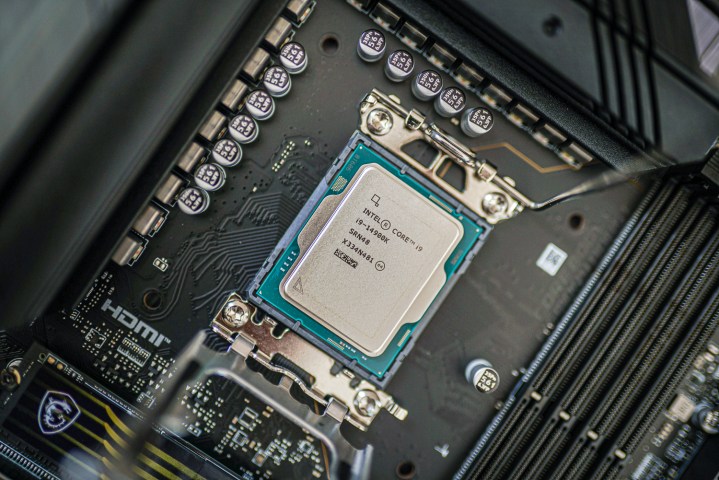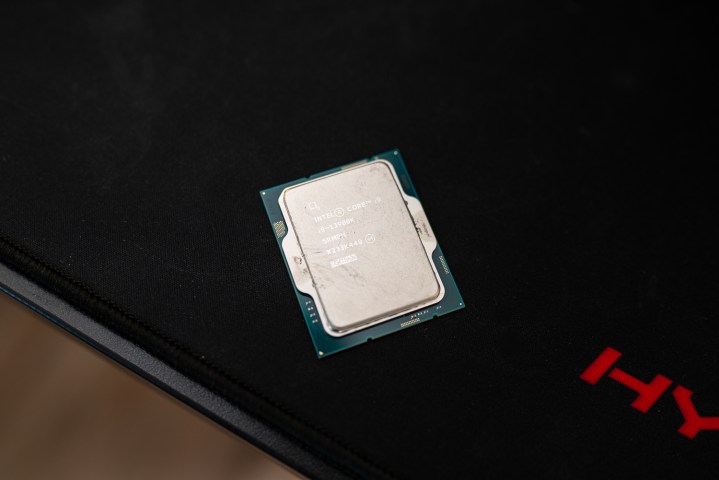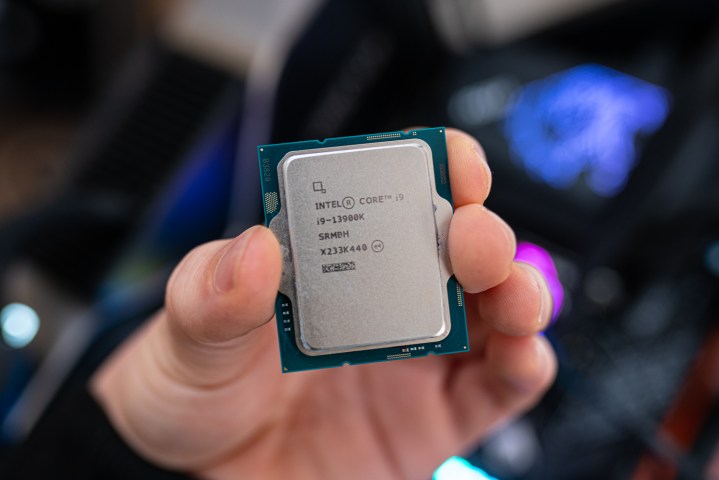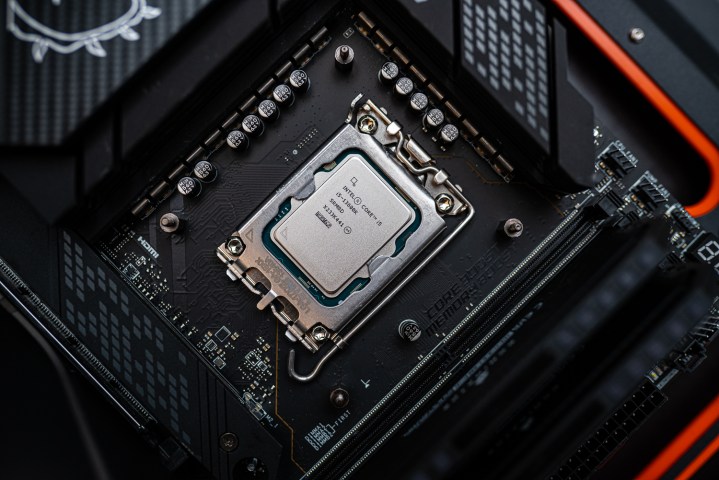
If your Intel CPU is acting up, rest easy — it’s not just you. In fact, the owners of some of Intel’s best processors have been going through a rough time lately — and that even includes game developers. The Core i9-14900K and the Core i9-13900K have been crashing for months now, and even though Intel has been quiet on the matter, you may be able to get your CPU replaced if it’s an ongoing problem.
Whether you own a recent Intel CPU or an older model is performing poorly, you can turn to a process called return merchandise authorization (RMA) to try to return the defective processor. Here’s how to RMA your Intel CPU.
Start with the retailer

If you bought your desktop Intel CPU at a retailer that offers some extra coverage, your best bet is to try to contact them first. In a worst-case scenario, they will tell you to reach out to Intel directly. The best-case scenario is that they’ll replace your CPU for you without your needing to get in touch with Intel at all. Some retailers will also act as a liaison between the customer and Intel, meaning that they will handle the RMA process and contact Intel directly.
Depending on the store, you might be able to ship the CPU back or return it yourself for a replacement or a refund. Many retailers only offer a limited-time window for when you can reach out to them for refunds and replacements, so time is of the essence. Unfortunately, in the case of failing Intel CPUs, this often means that the commonly used 30-day return period will have passed. Make sure to check with your specific retailer.
Here are direct links to the return policy pages for some of the most popular PC hardware retailers.
If returning your CPU through the retailer is not an option, it’s time to prepare to reach out to Intel.
What you’ll need to RMA your Intel CPU

Before you open a support ticket and request a replacement CPU, here are some things you should be aware of. Getting this sorted ahead of time might speed up the replacement process for you.
Your CPU type
First, figure out which type of CPU you own. We don’t mean the model, although that’s important too — we mean whether it’s a boxed desktop CPU or a tray CPU.
Boxed models are your typical desktop chips that you buy separately, or as part of a PC build, and they come in their own box, often with a cooling solution and with warranty information. So-called tray CPUs are shipped in large quantities to pre-built desktop manufacturers who then install them in PCs and laptops.
Figuring this out is fairly easy. If you built your PC yourself or had it built for you based on parts of your choice, you have a boxed CPU. If you bought a pre-built or a laptop, you have a tray CPU.
Boxed CPU RMAs are handled by Intel, but if you have a pre-built PC, you should reach out to the company that built the PC — such as HP or Asus.
CPU model and generation
Next, find out the model and the generation of your CPU. You can do this by following our dedicated guide. Alternatively, that information will always be on the box.
Serial number and batch number (ATPO and FPO)

These numbers will be necessary for you to open a support ticket and to check the status of your warranty. The easiest way to find them is to look at the box that your CPU came in.
At the bottom of the box, below a bar code, you’ll find the serial number beginning with S/N and followed by a string of numbers and letters. Next to it, you’ll find the batch number, which is a shorter string of letters and numbers beginning with Batch#. Keep those numbers close at hand, as you will need them soon.
If you no longer have the box for your Intel CPU, no worries — you can find the right numbers by looking at the processor itself, as pictured below.

The batch number (FPO) is easily visible on the CPU, although there are no helpful indicators as to which number to look for like there are on the actual box. Instead, just look for the final string of letters and numbers that follows the processor model and clock speed.
The serial number (ATPO) is a bit trickier. You’ll find a partial ATPO on the side of the CPU, and a 2D matrix that you’ll need to decode to obtain the full ATPO. Intel has a guide on how to do this — you’ll usually be able to do it with a smartphone app.
How to RMA your Intel CPU

Starting an RMA request with Intel is easy. First, you should check whether your CPU is still covered by warranty. You can do this here by picking the product type and typing in the FPO and the ATPO that you already found in the steps described above. If you’re trying to RMA a 13th- or 14th-gen Intel CPU, it’ll most likely still be under warranty, but it doesn’t hurt to check. This should also confirm for you whether your CPU is tray or boxed.
Next, you need to open an Intel support request. You’ll be asked to make an account on Intel’s website and verify your email.
Once you’re signed up, head back to the support page and choose Processors from the list of Intel products. Next, choose the type of processor you own — in most cases, it’ll be Intel Core Processors. Lastly, pick the generation, and then the model of CPU that you’re having trouble with, such as 13th Generation Intel Core i9 Processors and then Intel Core i9-13900KF Processor.
Describe the issues you’re having on the next page, and then choose Check for answers. Intel will direct you to its knowledge base, where you might be able to find some helpful information on how to fix the issue. We also have a step-by-step guide to help with Intel CPU problems, so check that out before you proceed.
Assuming that nothing else worked, click on Continue to request creation and fill out the form. You’ll need to provide Intel with some of the following information:
Intel will also ask you whether the CPU has sustained any physical damage. This may void the warranty.
To make the RMA process quicker, you can also provide Intel with things like:
- Proof of purchase
- Date of purchase
- Retailer you bought the CPU from
- Your operating system
- The entirety of your PC specs
Once you’re all done, tap on Submit request. At this point, it’s out of your hands, and Intel will get back to you in regard to your RMA request.
Does Intel replace 13th- and 14th-gen processors?

Intel’s 13th- and 14th-gen processors have been getting sent back in for replacement in droves — at least in Korea. However, given that the problems with these CPUs are now on a global scale and are still yet to be fixed, it’s likely that Intel must be handling RMA requests from all around the world.
In general, if the CPU is defective, we’ve mostly heard about Intel issuing swift replacements. Gamers in the r/Intel subreddit have been praising Intel’s RMA process, saying things like: “Intel, your RMA process is awesome,” and “Intel’s RMA is a godsend.” Both users were running a 13th-gen Intel CPU prior to sending in an RMA request.
However, there are situations in which Intel may deny your RMA request. Intel doesn’t offer a warranty on refurbished, used, or engineering sample CPUs, and it also doesn’t offer any warranty extensions. Overclocking may also void the warranty, as will any user-made damage to the CPU. There’s never a guarantee that your CPU will be replaced, but if you’re affected by the ongoing Intel CPU crash debacle, the odds are definitely in your favor.




